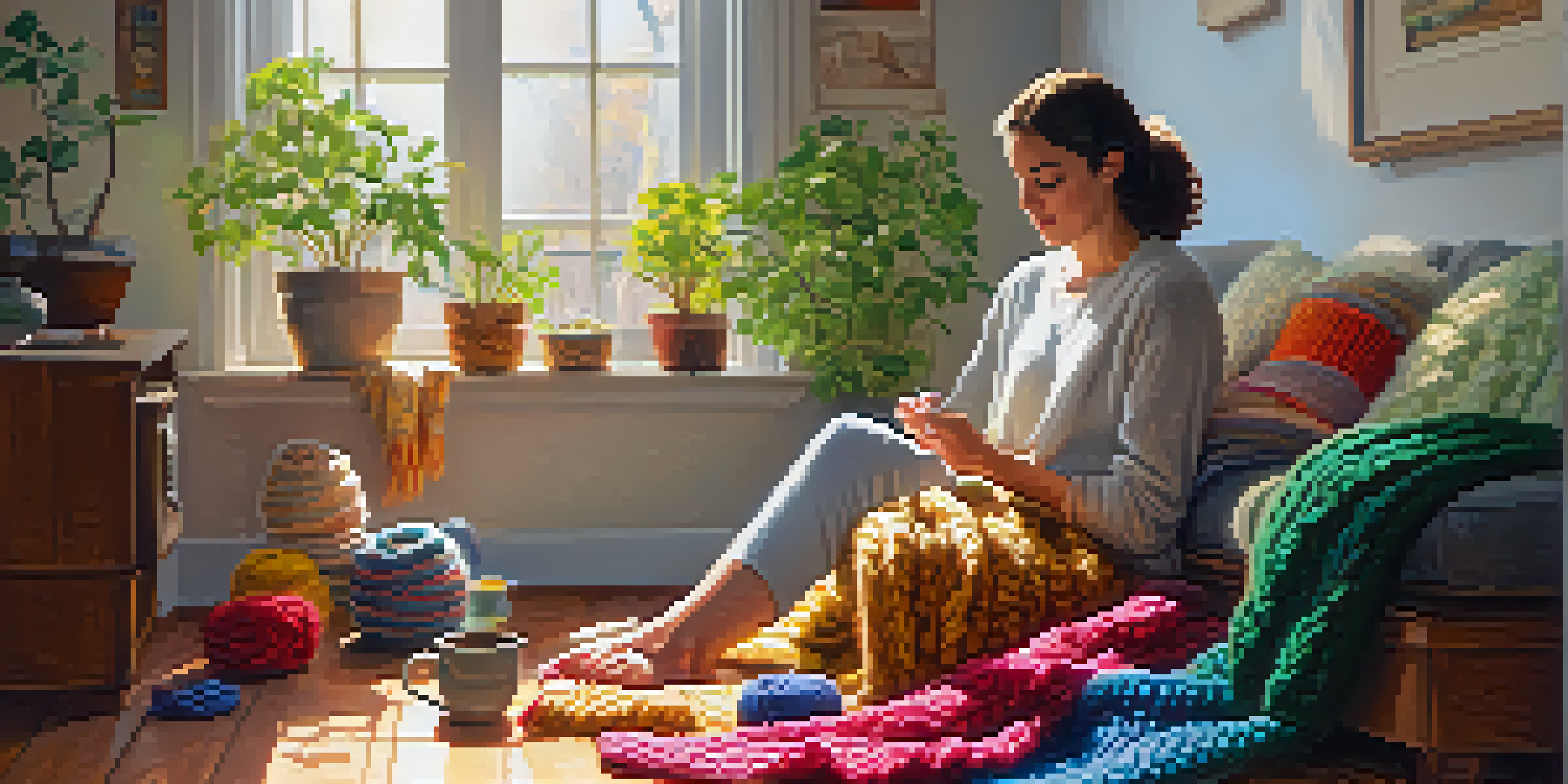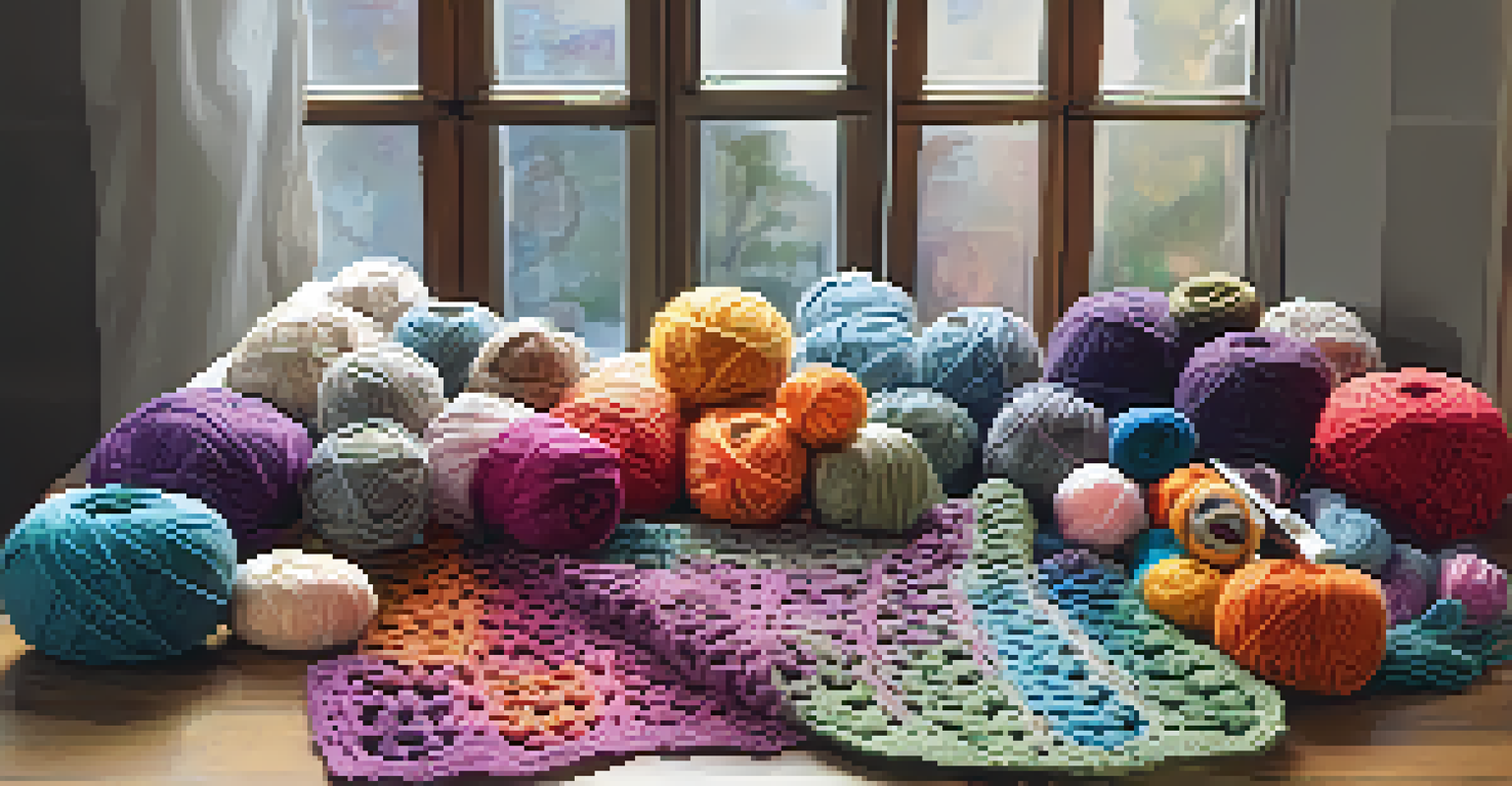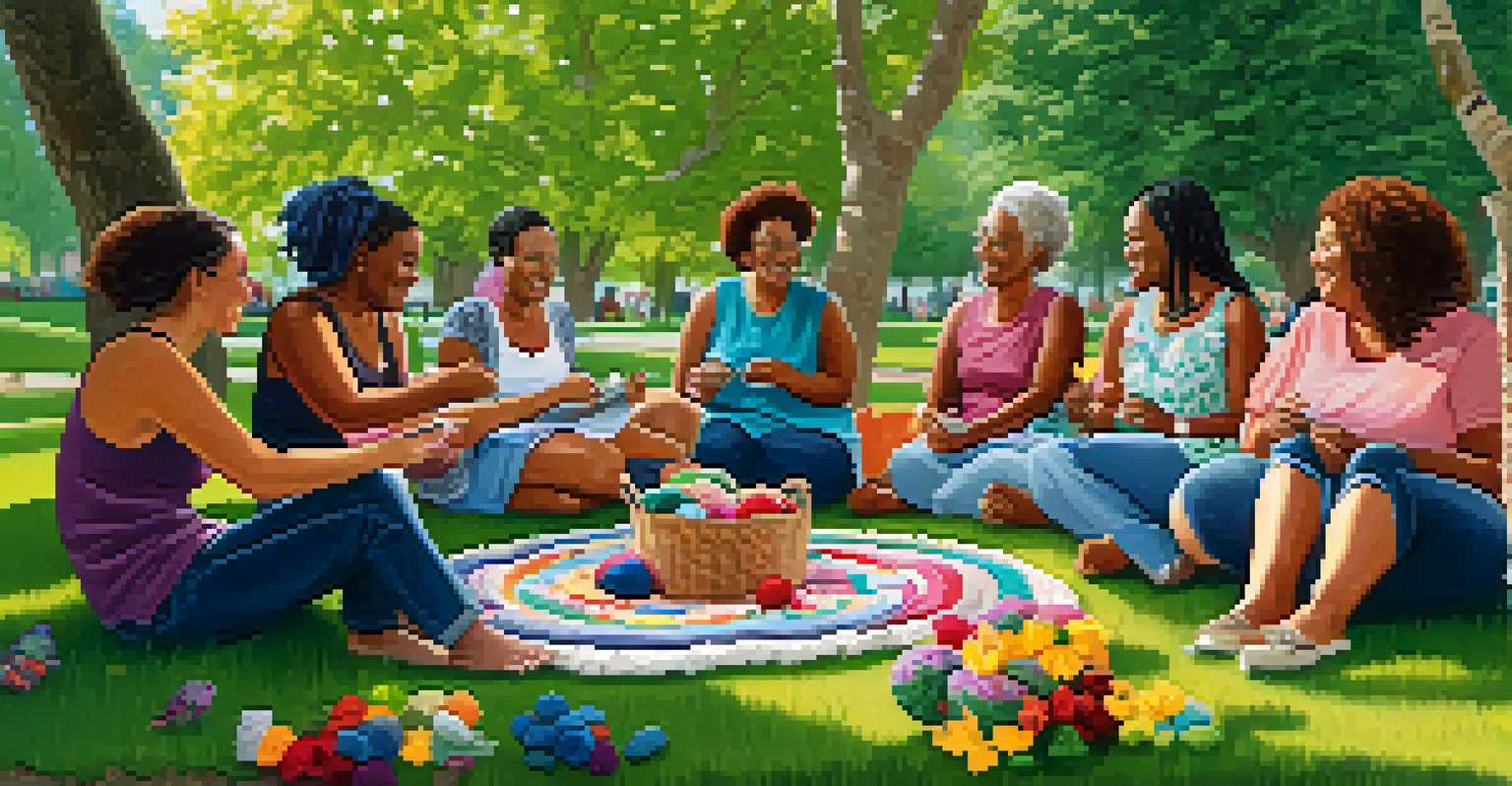The History of Knitting and Crocheting: A Crafting Journey

The Origins of Knitting: A Journey Back in Time
Knitting, as we know it today, has roots that stretch back to the 5th century. Evidence suggests that the earliest knitted items were found in Egypt, made from cotton yarn. This ancient craft was initially a practical means of creating clothing and accessories, often using simple techniques to produce warm garments.
Knitting is not just a craft; it’s a way of life that brings people together.
As trade routes expanded, knitting made its way to Europe, where it evolved significantly. By the 14th century, it became a popular pastime among the wealthy, leading to the creation of intricate patterns and styles. The craft shifted from purely functional to a form of artistic expression, showcasing the skills of the knitter.
The knitting community began to grow, with patterns being shared among women, often in social settings. This early collaboration laid the foundation for the tight-knit (pun intended!) communities that we see in today’s crafting world, where sharing ideas and techniques remains a cherished tradition.
Crocheting: A Unique Craft with Distinctive Techniques
While knitting has ancient roots, crocheting is a bit more recent, emerging in the 19th century. The term 'crochet' comes from the French word for 'hook,' and this craft uses a single hook to create fabric, making it distinct from knitting. Crocheting allowed for quicker creations and a different texture, appealing to many crafters.

The rise of crocheting coincided with the Industrial Revolution, which led to mass production of yarns and tools. This accessibility opened the door for more people to try their hand at crocheting, turning it into a widespread hobby. Patterns began circulating through magazines, inspiring a new generation of crafters.
Knitting's Rich Historical Roots
Knitting dates back to the 5th century, evolving from a practical craft in ancient Egypt to a beloved artistic pursuit in Europe.
Crocheting has a unique charm that often attracts beginners. Its versatility means that you can create anything from delicate lace doilies to cozy blankets, making it a favored choice for those looking to express their creativity through the medium of yarn.
The Role of Knitting and Crocheting in Society
Throughout history, knitting and crocheting have served more than just practical purposes; they have also played significant social roles. During wartime, for instance, women often knitted socks and blankets for soldiers, fostering a sense of community and support. These acts of crafting created bonds among those involved, turning the activity into a communal effort.
Crocheting is a form of art that allows us to express ourselves through yarn and creativity.
In the 1960s and 70s, knitting and crocheting experienced a resurgence as a form of rebellion against mass-produced clothing. Crafters began to embrace handmade items as a way of expressing individuality and rejecting consumerism. This movement laid the groundwork for the modern crafting culture we see today.
Today, knitting and crocheting continue to bring people together. From local knitting groups to online communities, these crafts foster connections across generations, offering a sense of belonging while sharing techniques and ideas. The social aspect of crafting remains a vital part of its appeal.
Knitting and Crocheting: A Therapeutic Escape
In our fast-paced world, many people find solace in the rhythmic motions of knitting and crocheting. Studies have shown that these crafts can reduce stress and anxiety, providing a calming effect similar to meditation. The repetitive nature of stitching can create a mental space for relaxation, allowing crafters to unwind.
Moreover, the act of creating something tangible can boost self-esteem and provide a sense of accomplishment. Whether finishing a scarf or a complex sweater, the satisfaction of completing a project is immensely rewarding. This therapeutic aspect of crafting makes it a popular choice for those seeking a break from their daily routines.
Crocheting's Unique Appeal
Emerging in the 19th century, crocheting offers distinct techniques and quicker creations, making it a favorite among crafters.
As more people discover the mental health benefits of knitting and crocheting, workshops and classes have become increasingly popular. These gatherings not only teach skills but also create supportive environments where people can share their stories and experiences, reinforcing the idea that crafting is far more than just a hobby.
Modern Trends: A New Era for Knitting and Crocheting
The digital age has transformed knitting and crocheting, making patterns and tutorials more accessible than ever. Online platforms and social media have created vibrant communities where crafters can share their work, find inspiration, and learn from each other. Instagram and Pinterest are particularly rich sources of creativity, showcasing everything from intricate designs to beginner-friendly projects.
Sustainable crafting is also gaining traction, with many crafters opting for eco-friendly yarns and materials. This shift reflects a growing awareness of environmental issues and the desire to make conscious choices in crafting. Many brands now offer organic and recycled yarns, appealing to those who wish to craft responsibly.
Additionally, knitting and crocheting are becoming more inclusive, with patterns catering to various skill levels and styles. This welcoming approach encourages crafters of all backgrounds to participate, fostering diversity within the crafting community. The modern landscape of knitting and crocheting is vibrant and filled with endless possibilities.
The Future of Knitting and Crocheting: What's Next?
As we look to the future, it's clear that knitting and crocheting will continue to evolve. Innovations in yarn technology and tools are making the crafting experience even more enjoyable. From smart knitting needles that track progress to new types of yarn that respond to temperature, the future is bright for crafters.
Moreover, the rise of virtual crafting events and online classes has opened doors for people worldwide to connect and share their passion. This trend is likely to continue, encouraging a global exchange of ideas and techniques. The ability to learn from and collaborate with crafters from different cultures enriches the crafting experience.
Crafting as a Therapeutic Escape
Both knitting and crocheting provide mental health benefits, promoting relaxation and a sense of accomplishment through creative expression.
Finally, as more people prioritize mental health and wellness, the popularity of knitting and crocheting as a form of self-care will likely grow. This enduring craft provides not just a creative outlet but also a means to connect with others and oneself, ensuring that knitting and crocheting remain relevant for generations to come.
Conclusion: Celebrating the Crafting Journey
In conclusion, the history of knitting and crocheting is as rich and diverse as the patterns created by crafters. From ancient origins to modern trends, these crafts have woven their way through time, adapting and evolving to meet the needs of society. They serve as a reminder of the beauty of creativity and the importance of community.
As we celebrate the journey of knitting and crocheting, it's essential to recognize the skills and dedication of those who came before us. Their passion has paved the way for the vibrant crafting culture we enjoy today, inspiring future generations to pick up their needles and hooks.

So, whether you’re a seasoned pro or just starting out, remember that knitting and crocheting are more than just hobbies; they are pathways to connection, creativity, and self-expression. Embrace the journey and enjoy every stitch along the way!